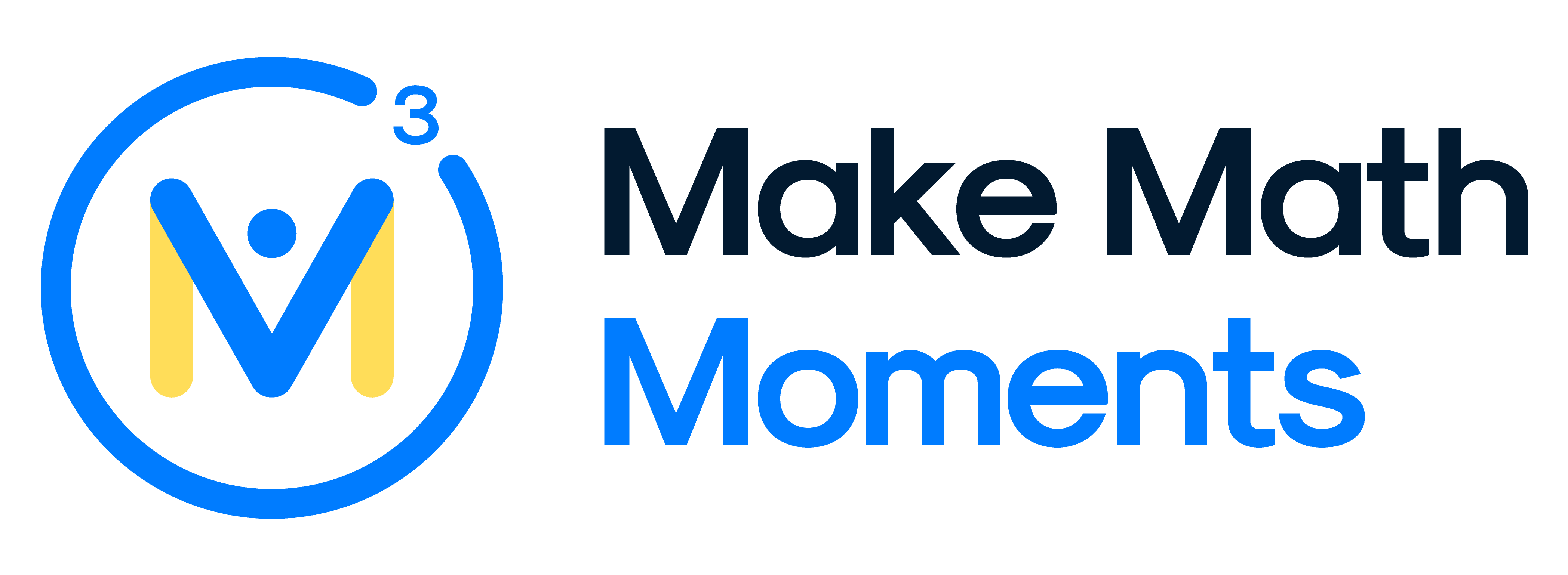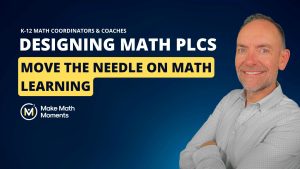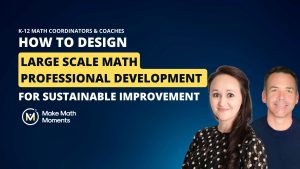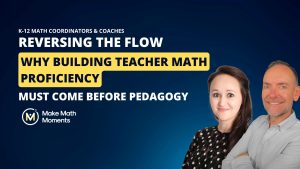For many districts, the hardest part of improving math learning isn’t the lack of will — it’s the challenge of getting everyone moving in the same direction.
That was the case for a large French-language district in Ontario serving more than 20,000 students. Over the past three years, their math leadership team has been on a journey to strengthen conceptual understanding, build teacher capacity, and create sustainable systems that go beyond one-off professional development.
Their story shows what’s possible when a district moves from “trying everything” to “focusing on the right things.”
The Starting Point: Too Many Priorities, Not Enough Alignment
When this team first joined the Make Math Moments District Improvement Program, their math team was working hard — but their efforts were spread across too many initiatives.
Each coach had a unique approach. Some focused on fractions, others on algebra, and still others on high-impact practices like discourse or problem solving. Progress was happening, but it was hard to see the collective impact across schools.
Their challenge was familiar:
“We’ve invested in so many good things — but how do we know if we’re making progress?”
The Turning Point: Building a Shared Vision Around Conceptual Understanding
The first big shift came when leaders decided to anchor their entire math improvement plan around conceptual understanding — particularly in fractions and algebra, two areas with the greatest leverage for student reasoning.
Instead of launching new initiatives, the team deepened their focus:
- Co-learning to strengthen proportional reasoning knowledge.
- Watching MMM task training videos together to align on common instructional language.
- Using weekly MCS meetings to collect “transformation evidence” — classroom observations, teacher reflections, and student work.
They stopped measuring success by the number of workshops delivered and started asking,
“What’s actually changing in classrooms?”
The Win: Systemwide Alignment Around the “Right Work”
This fall, after three years of sustained effort, the team reached a turning point.
Every school is now asked to select one of three high-impact instructional practices — such as teaching through problem solving, using representations, or clarifying learning goals — and connect it directly to their math achievement plan.
Coaches are co-planning, co-teaching, and co-reflecting with educators, using a common observation and documentation process. Principals are being engaged as partners, not just observers. And professional learning is designed in multi-day cycles that include Day 1 whole-group learning and Day 2+ differentiated follow-up and coaching.
Their biggest win?
“We’re finally focused on the right thing — and we’re all speaking the same math language.”
What Math Leaders Can Learn
This team’s journey offers powerful takeaways for any district trying to build coherence and sustainability in math improvement.
1. Narrow the Focus Before Scaling
Lasting change doesn’t come from doing more — it comes from doing less, better.
Choose one or two high-impact goals that will create the biggest shift in teaching and learning. For this team, that meant focusing deeply on conceptual understanding and high-impact practices instead of juggling multiple initiatives.
2. Model the Learning You Expect
Their coaches didn’t just tell teachers what good instruction looks like — they learned it together. Watching math tasks, solving problems, and debriefing as a team built both shared language and credibility.
3. Make Reflection and Documentation Routine
Weekly “transformation evidence” meetings and breadcrumb check-ins helped the team stay accountable. Capturing small wins and qualitative data (the “street data”) keeps momentum visible and progress measurable.
4. Engage Principals as Instructional Leaders
Math improvement stalls without principal buy-in. The team is now designing principal-specific learning sessions on high-impact practices, ensuring leaders can recognize and support the same look-fors as their teachers.
5. Plan for Depth Over Breadth
Instead of moving from fractions to algebra to proportional reasoning in isolation, they are intentionally layering each year’s content focus so teachers see the vertical coherence of mathematics — and how it connects to big ideas across grades.
Looking Ahead: Building for Sustainability
As they head into its next cycle of improvement, the focus is on continuity and communication — ensuring every school’s math goal aligns with the board’s objectives and that every principal knows what success looks like.
They’ve built systems that can outlast any one leader or coach — and that’s what sustainable improvement is all about.
If You’re a Math Leader…
If your district’s math work feels scattered, or you’re struggling to see consistent impact, start where this team did:
- Define one shared vision for math instruction.
- Identify a small set of measurable key results.
- Build a professional learning system that keeps the focus alive all year.
You don’t have to do it alone — that’s exactly what the Make Math Moments District Improvement Program is designed to support.
Learn more about building a sustainable math improvement plan






